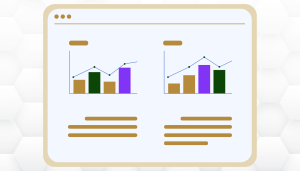
Share
7 Reasons the Affiliate Channel is Marketing’s Silver Lining in Chaotic 2020
In this frankly unbelievable year we all are living through, with marketing budgets facing cuts across the board, especially in certain industries hit harder by COVID-19, it’s difficult to imagine a specific marketing segment that is actually seeing a surge.
Well, that’s exactly what’s going on right now with affiliate marketing. As an agency specializing in affiliate, Advertise Purple is currently onboarding new clients, new employees, and fairing well given the circumstances when not so many are lucky enough to say the same.
There are quite a few more reasons why this is the case than we’ll be able to address in this article. But to make things a bit less taxing for you, the reader, we’ve cut it down to 7 of the best benefits to affiliate marketing. We’ll be referring to it throughout as the “affiliate channel”.
The goal is to provide a better understanding of the fastest growing most versatile marketing channel. One that works in good times and bad, especially when taking risks and making investments without clear measurable benefit is no longer an option (i.e. during Coronavirus).
So, let me dive right in.
1. Cost-Per-Acquisition (CPA) payment structure minimizes risk
The CPA payment structure, often referred to as performance-based pricing guarantees that each penny you pay to the affiliate and/or network correlates with an action from an end-client (in most cases a purchase).
Pay-per-click, SEO, and other similar marketing methods can get you halfway there. But just because a user was baited by an advertisement to click doesn’t mean they’re going forward with a purchase.
The limitations of traditional marketing methods have moved marketing decision-makers to instead start up an affiliate program.
Why? Well, It’s a robust and easy-to-monitor strategy that has steadily managed to drive more revenue for brands, even during this era of lockdowns and shelter-in-place orders due to the spread of the coronavirus.
2. The digital online sales infrastructure is still in tact, and growing at 9.1% yearly
No matter how you look at it, it’s true that any online sales strategy relies heavily upon our global supply chain and infrastructure. Without the digital supply chain, it doesn’t matter how you market a product. If it doesn’t get to the consumer, it’s a failure.
Of course, after the Coronavirus hit, that was put to the test. It turned out the increased demand from more online shopping was met with a supply chain that could handle meeting the needs of the market.
This was a big win for affiliate marketers who needed to be able to follow through, not just with helping shoppers find goods but making sure they were set to receive them within a reasonable time period.
Quite quickly, fears that brick and mortar locations closing would be a stress on that supply chain were quelled. Additionally, the global online marketplace optimization tools market is predicted by experts to observe a 9.1% Compound Annual Growth Rate (CAGR) through 2027.
That massive growth rate takes into account COVID-19.
3. There are affiliates of all kinds that specialize in every vertical – even yours!
There are a great deal of affiliates (often referred to as publishers) to choose from. This can feel overwhelming. But don’t fret.
They are incentivized to sell your product as they’re promised a percentage of the revenue made on a sale. Due to the very nature of their dealings with customers, they learn quickly how to sell products that fall into whatever category they promote on their page.
Affiliates normally have a very specific niche to whom they market, generally adhering to that audience’s interests. They, themselves, have an idea of whether your product is a match, but by doing enough research (and/or hiring an agency like Advertise Purple to help), you can recruit the best affiliates for your brand.
Remember that affiliates themselves have a personal brand but you should also have distinct branding for your product. Those two identities should work in tandem to get the sale made. Then everybody ends up happy and the collaboration is a success.
4. Affiliate marketing is growing incredibly quickly and becoming more effective
According to a report from Authority Hacker, affiliate marketing today brings in an average of 23% of the total revenue generated by merchants, which is very similar to PPC (pay per click) and SEO (search engine optimization) marketing.
You may recall, I mentioned those two forms of marketing earlier in this rundown. Affiliate marketing stats suggest that this is a remarkably fast-growing market. Affiliates like the idea of passive income, and brands recognize that. It’s a win-win for both sides.
At this current moment, according to Software Findr, the global value of the affiliate marketing industry is approximately $12 billion, with spending on affiliate marketing expected to grow by 10% in the coming years.
5. Publishers themselves are bullish on revenue numbers
While we’re seeing growth in the industry, it’s also important to take account of what the active participants in the affiliate channel think. At this current moment, publishers are more confident than ever before that they’ll continue seeing growth from their affiliate sites.
81% of publishers expect to see a steady flow or a significant increase in their affiliate marketing revenue. Meanwhile, a whopping 91% of merchants plan to keep or increase their affiliate marketing budgets, according to a report from Viglink.
Working in this industry for about a decade, we at Advertise Purple are thrilled to not only see growth but more excitement than we’ve seen before for an industry put to the test having passed with flying colors.
6. Affiliate marketing, once riddled with doubters, is going mainstream
Please allow me to draw a quote from an interview we recently put together with a representative from one of our favorite partners, Honey.
According to Director of Partnerships at Honey Marni Gusman, when asked about the biggest misconception from those new to or unfamiliar with affiliate marketing, she replied:
“I think the biggest misconception is that we sell customer data, or do other shady things with it. In reality, that couldn’t be further from the truth. We work with affiliate agencies like Advertise Purple and earn commissions from merchants on sales that we facilitate. We don’t want to — or need to, do anything with customer data that doesn’t benefit the customer directly.”
So, no, the affiliate channel is not a “get rich quick” scheme nor a data mining ploy. Also, speaking of Honey, the fact that PayPal purchased them for $4 billion was as good an endorsement as any that affiliate marketing was well on its way to the mainstream.
7. 81% of brands have affiliate programs – but that does not mean they are optimized
For a lot of the reasons we’ve already mentioned above, the majority of brands have affiliate programs – 81%. However, at Advertise Purple, every day we talk to brands who say they have an affiliate program but haven’t made adjustments or corrections to it in months, or even years.
Working with an agency like Advertise Purple takes away the stress of trying to make sense of what we once described as the world’s most confusing grocery store.
We know how important it is to optimize when working with the affiliate channel. This is not a set and forget it marketing method. Which is why we’ve gone full steam ahead building an agency focused on getting affiliate marketing right – on our clients behalf.
The same way you could say a great publisher finds its niche, you could make the claim at Advertise Purple, we’ve found ours. As the leader in affiliate marketing management, we are a great destination for your brand if you want to unlock new streams of revenue.
—
All of that said, give us a call, or reach out at [email protected]. We’d love to help you harness the potential of the fastest growing marketing channel and an advertising strategy that couldn’t even be stifled by COVID-19. We expect even better things from the affiliate channel in the future. Don’t miss out!





